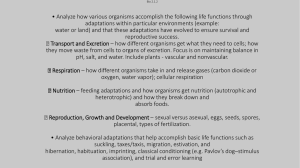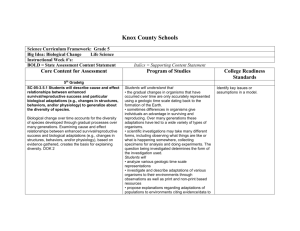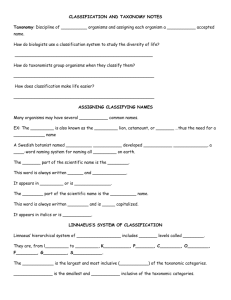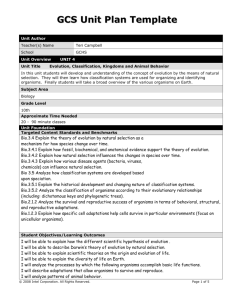Unit 6 Objectives Sheet
advertisement
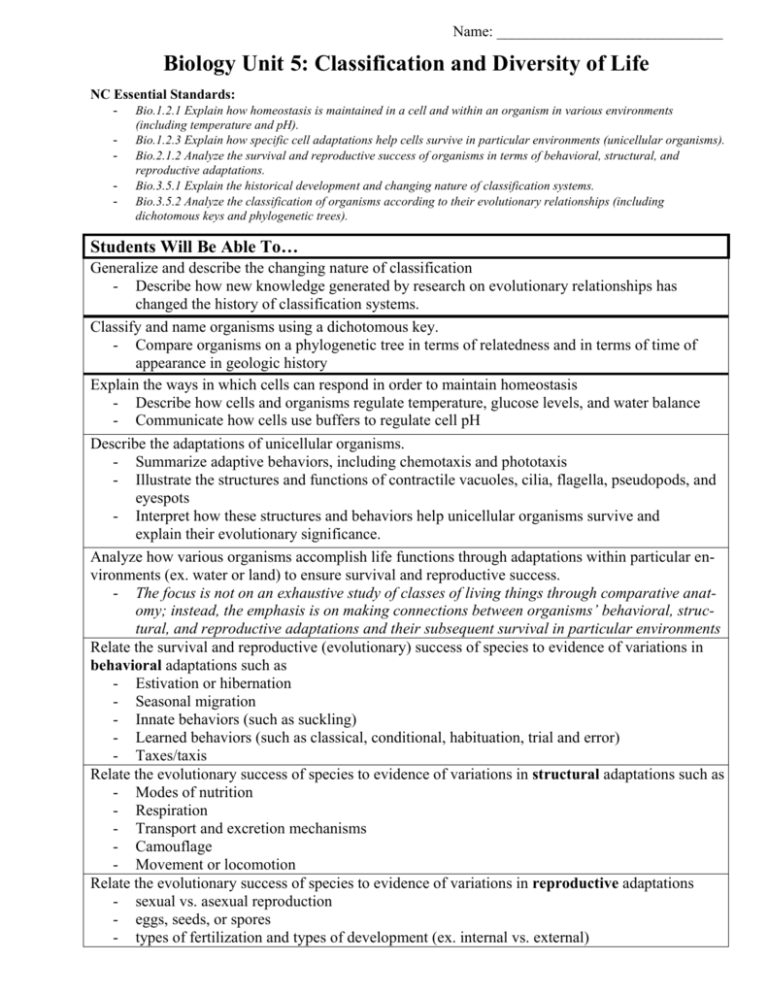
Name: ______________________________ Biology Unit 5: Classification and Diversity of Life NC Essential Standards: - Bio.1.2.1 Explain how homeostasis is maintained in a cell and within an organism in various environments - (including temperature and pH). Bio.1.2.3 Explain how specific cell adaptations help cells survive in particular environments (unicellular organisms). Bio.2.1.2 Analyze the survival and reproductive success of organisms in terms of behavioral, structural, and reproductive adaptations. Bio.3.5.1 Explain the historical development and changing nature of classification systems. Bio.3.5.2 Analyze the classification of organisms according to their evolutionary relationships (including dichotomous keys and phylogenetic trees). Students Will Be Able To… Generalize and describe the changing nature of classification - Describe how new knowledge generated by research on evolutionary relationships has changed the history of classification systems. Classify and name organisms using a dichotomous key. - Compare organisms on a phylogenetic tree in terms of relatedness and in terms of time of appearance in geologic history Explain the ways in which cells can respond in order to maintain homeostasis - Describe how cells and organisms regulate temperature, glucose levels, and water balance - Communicate how cells use buffers to regulate cell pH Describe the adaptations of unicellular organisms. - Summarize adaptive behaviors, including chemotaxis and phototaxis - Illustrate the structures and functions of contractile vacuoles, cilia, flagella, pseudopods, and eyespots - Interpret how these structures and behaviors help unicellular organisms survive and explain their evolutionary significance. Analyze how various organisms accomplish life functions through adaptations within particular environments (ex. water or land) to ensure survival and reproductive success. - The focus is not on an exhaustive study of classes of living things through comparative anatomy; instead, the emphasis is on making connections between organisms’ behavioral, structural, and reproductive adaptations and their subsequent survival in particular environments Relate the survival and reproductive (evolutionary) success of species to evidence of variations in behavioral adaptations such as - Estivation or hibernation - Seasonal migration - Innate behaviors (such as suckling) - Learned behaviors (such as classical, conditional, habituation, trial and error) - Taxes/taxis Relate the evolutionary success of species to evidence of variations in structural adaptations such as - Modes of nutrition - Respiration - Transport and excretion mechanisms - Camouflage - Movement or locomotion Relate the evolutionary success of species to evidence of variations in reproductive adaptations - sexual vs. asexual reproduction - eggs, seeds, or spores - types of fertilization and types of development (ex. internal vs. external)

